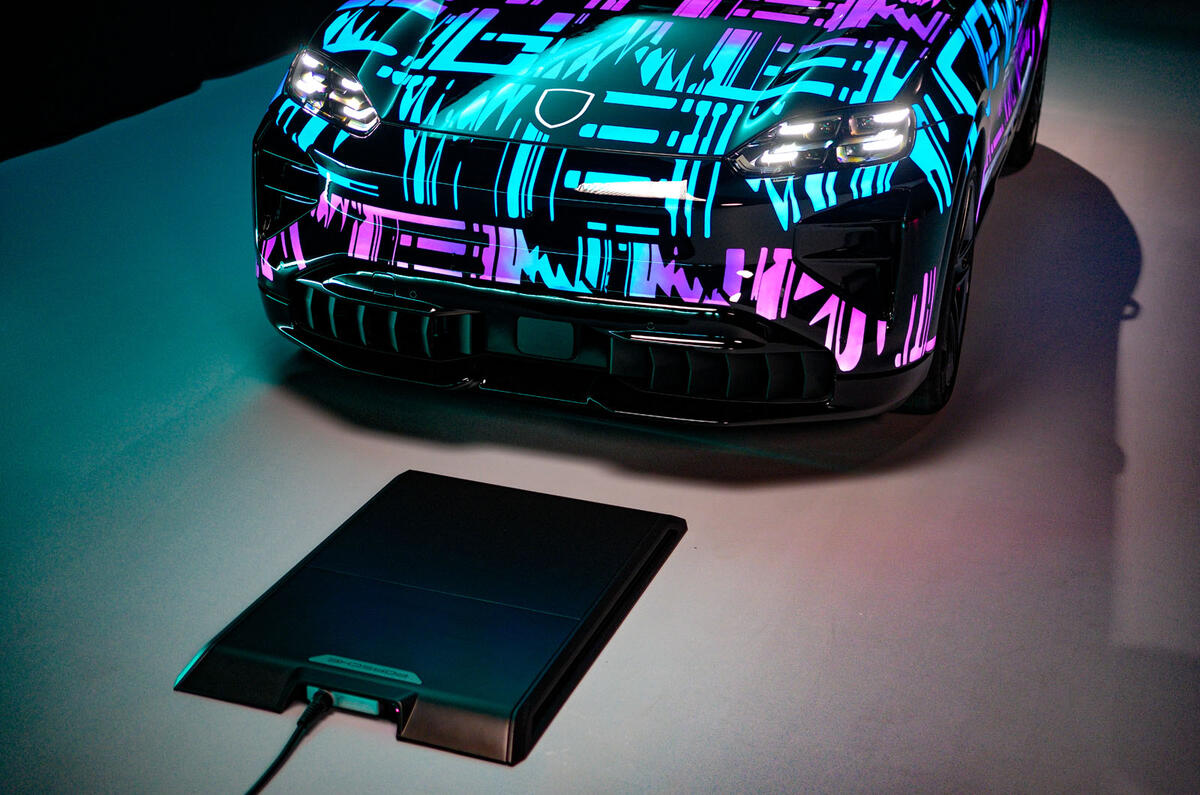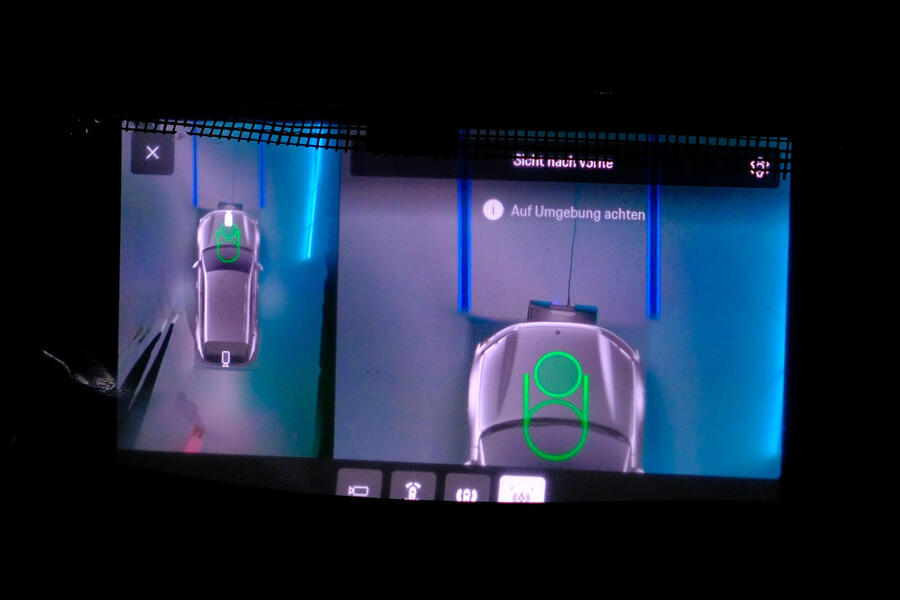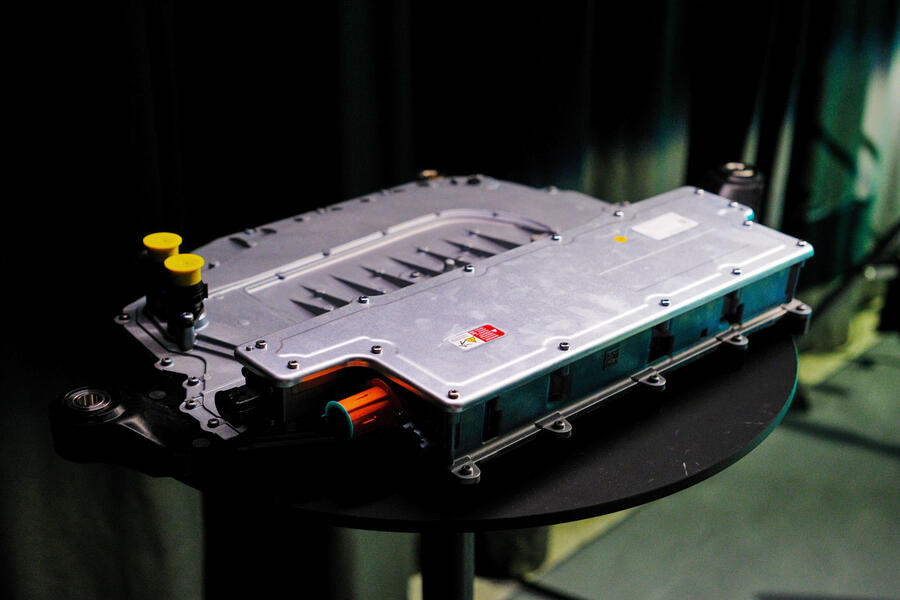The 348’s dog-leg first gear is a delightful reminder of cars from a couple of decades ago. Once the transmission fluid is warmed up, the shift action is not particularly heavy, but, sadly, there’s little of Ferrari’s traditional click-clack sound when I change gears. Unlike the earlier 328 or later F355, the 348 uses a cable shift mechanism. On the plus side, every shift is a bit of an event. While it can’t be rushed, why would I want to do so when every shift has such a satisfying, mechanical action to it?
Because there is no power steering, parking maneuvers are a pain, but that matters little when the Ferrari starts moving and I’m flooded with steering feedback. It has been a while since I’ve enjoyed a car’s steering feel to this extent, although it always takes some effort to make the 348 do what I want.
As I start to rev the engine harder, the V8 emits a more intense, soulful sound; its zest increases as it approaches the 7,500-rpm redline. There’s more than enough torque available in the middle of the rev range, but there’s no reason to dawdle when it’s so enjoyable to watch the orange tachometer needle spin as the engine howls away
Two Steps Forward
The 348 pushed Ferrari’s V8 sports cars into new performance territory, but early examples suffered from serious quality issues.

Photos by David Bush
March 2, 2023
As the replacement for the long-running 308/328 series, as well as the first all-new model revealed after Enzo Ferrari’s death, the 348 had some seriously big shoes to fill. And when it debuted at the 1989 Frankfurt Auto Show, it appeared the new model had done exactly that.
Available initially as a berlinetta (tb) or targa (ts), the 348 introduced a new vision to Maranello’s V8 lineup. Most significant was the adoption of monocoque construction—in this case, a pressed-steel chassis with welded-on body panels—in place of the company’s traditional steel-tube frame. In addition, the 348’s 300-hp engine was mounted longitudinally, instead of the 308/328’s transverse placement, and paired with a transverse gearbox (an innovation first seen on the Mondial t) for better packaging and a lower center of gravity.
While the 348’s mechanicals were a clear improvement over those of its predecessors, the same couldn’t necessarily be said of its styling. Pininfarina’s designers dropped the 328’s classic lines in favor of a modern, angular, wedge shape outfitted with Testarossa-style slatted air intakes and taillights. Reviews were mixed.
Reports on the driving experience were likewise mixed. There was no question the newest “baby” Ferrari came with a significant increase in performance, one that brought it closer than ever to the company’s 12-cylinder flagship, but the 348 was accused of tricky at-the-limit handling. In an era when Acura’s NSX made driving an exotic car easy, this was a high hurdle to overcome. Extensive and well-publicized problems with build quality soon further blemished the new model’s image.

It wasn’t long before the 348 bounced back, however. Ferrari went to exceptional lengths to repair problems with existing cars, vastly improve the build quality of new ones, and sort out the handling issues (’92-and-later examples received reworked suspension hardware and settings). The launch of the sportier Serie Speciale in 1992 and the debut of the Ferrari Challenge racing series in ’93 gave the model newfound credibility, while the 1994 arrival of the 348 Spider reintroduced a true convertible to Ferrari’s stables for the first time in more than two decades.
Today, the 348 continues to divide opinion. While many owners swear by their cars’ performance and overall reliability, the model’s reputation remains tarnished by its early teething problems, even though most of those issues were resolved over time. While it’s crucial to search out a fully updated, fully serviced example, the 348’s bad rep is a boon for today’s buyer—it has kept prices relatively low.
Marketplace
The 348 was, in many ways, Ferrari’s first modern car. Unfortunately, the $120,000 model was also the wrong car at the wrong time. The 348 was introduced just as the 1985-89 collector-car market imploded, which reduced demand for new and used Ferraris alike.
Further diminishing buyers’ enthusiasm was the fact that early examples suffered from serious build-quality issues, while the Testarossa-inspired styling—so radical and in vogue a few years earlier—was starting to age, badly. All these factors conspired to reduce 348 production by nearly 50 percent by 1993.

In the end, though, the 348 ended up outselling both the 308 and the 328, with more than 8,300 examples produced between 1989 and ’95. Breaking down that total, Ferrari built 3,116 berlinettas, 4,446 targas, 1,146 Spiders, and 100 of the U.S.-only Serie Speciales.
It’s no surprise the comparatively rare Serie Speciale commands a higher price than its more populous siblings, although the difference is modest. Overall, the 348’s high production numbers mean there’s no chance of the model ever becoming collectable in any financial sense. —Michael Sheehan
| Model | Low | High |
|---|---|---|
| 348 tb | $60,000 | $80,000 |
| 348 ts | $60,000 | $80,000 |
| 348 Spider | $60,000 | $85,000 |
| 348 Serie Speciale | $75,000 | $95,000 |
These prices are for cars in good-to-great condition as of March 2023.
The Garage
Although the 348 was greeted with real excitement when it debuted in Frankfurt in 1989, that enthusiasm quickly began to wane. This came in two waves; first when automotive reviewers began to grumble about the model’s handling, second when owners began to receive their cars. Luca di Montezemolo famously complained about the feel and build quality of his own 348—he called it one of the worst cars ever to wear the Prancing Horse badge—which led him to prioritize the development of its replacement, the F355, when he became Ferrari’s president in 1991.

By that time, however, the company was already hard at work resolving the 348’s woes. Many components were redesigned (the early transaxle alone received three major updates), dealers worked hard to provide fixes, and the 1992-’95 examples were markedly improved over earlier cars.
Even if you’re buying a later 348, it’s well worth spending the extra money up front to get a car that’s been fully maintained, and fully updated per the factory’s recommendations, by an expert. These Ferraris are fairly inexpensive—they cost less than the 328 that preceded them and the F355 that followed—which has led many owners to cheap out on necessary maintenance and repairs. As always, it’s highly advisable to get an expert opinion on any Ferrari you’re considering, and that advice applies doubly to the 348.
So what can go wrong? Among other concerns, early 348s can suffer from excessive chain tensioner wear (the lower drive system should be inspected whenever the engine is removed) along with a problematic inner support bearing for the cam-drive jack shaft. The factory initially updated that bearing, then later revised the engine block itself in order to improve the arrangement.
Leaking engine seals and gaskets were sometimes an issue, but these should have been replaced with updated factory parts long ago. The same applies to early alternators and starter motors.

All 348’s can suffer from electrical gremlins. Today, most of these afflict the cabin’s electronics, especially the difficult-to-repair HVAC controller, so be sure to check that all of the switches, buttons, and dials work properly. However, with the newest 348 now being almost 30 years old, every wire and connector is waiting to corrode or break; it’s hard to know in the moment if a window won’t go up because of the wiring, the switch, or a mechanical issue in the door.
Like so many Ferraris, the 348 suffers from the irritating, and messy, “sticky switches” problem. Luckily, a few companies, including Sticky No More, have arisen to refinish sticky interior plastic pieces.
Last but far from least, the 348, like other Ferraris of the era, mounts its engine, transaxle, and rear suspension on a removable subframe. When it’s time for a major service (as well as many engine and transmission-related repairs), that subframe and all attached components must be removed from the car. This process is as laborious as it sounds, and the costs involved rise accordingly, so make sure you budget for that expense, which comes around every three years. You won’t want to stretch that timeframe, since if the 348’s single serpentine cam belt breaks or jumps timing, the valves will meet the cylinders with expensive results.
On The Road
Over the years, the 348 has received mixed reviews,
with critics alternately praising its power and panning its handling. Here’s some of what we’ve said about the model.

“Eastern Promises,” FORZA #180
The 348’s dog-leg first gear is a delightful reminder of cars from a couple of decades ago. Once the transmission fluid is warmed up, the shift action is not particularly heavy, but, sadly, there’s little of Ferrari’s traditional click-clack sound when I change gears. Unlike the earlier 328 or later F355, the 348 uses a cable shift mechanism. On the plus side, every shift is a bit of an event. While it can’t be rushed, why would I want to do so when every shift has such a satisfying, mechanical action to it?
Because there is no power steering, parking maneuvers are a pain, but that matters little when the Ferrari starts moving and I’m flooded with steering feedback. It has been a while since I’ve enjoyed a car’s steering feel to this extent, although it always takes some effort to make the 348 do what I want.
As I start to rev the engine harder, the V8 emits a more intense, soulful sound; its zest increases as it approaches the 7,500-rpm redline. There’s more than enough torque available in the middle of the rev range, but there’s no reason to dawdle when it’s so enjoyable to watch the orange tachometer needle spin as the engine howls away.
“The Unloved Ferraris,” FORZA #48
Despite comments by past testers, I still find the Serie Speciale’s driving position suited to someone whose legs are shorter and arms are longer than mine—and the seats are definitely made for someone with a narrower posterior. But there is a payoff, and it comes as soon as the drive begins.
The Serie Speciale is a rocket sled, pure and simple, with more straight-line speed than can be exploited on public roads, cornering potential far beyond my skill level, and superb brakes. It sounds terrific, too, especially as it reaches its 7,500-rpm redline.
This Ferrari makes its driver work for speed. Steering, braking, and shifting all require deliberate effort. Delicacy doesn’t count here; the car does what you make it do, no more and certainly no less. In its cornering behavior, the Serie Speciale is a vast improvement over earlier 348s, showing no tendency to wag its tail. That criticism of the breed was unjustified in my view, anyway, as what some found to be erratic behavior was simply the 348’s razor-sharp responsiveness.
“Sparkling Diamond or Gem in the Rough?,” FORZA #30
The Tipo F119 3.4-liter V8 is a pure joy, energetic and extremely tractable. Stomp on it in first gear and the 348 makes the 328 seem anemic, rough around the edges, and decidedly “old school.” When standing on it and whacking the shifter through second and third gears, the 348 delivers that exhilarating, relentless pull found in the F512M.
It also relishes sinuous roads. The [unassisted] steering is so beautifully direct that the car moves the instant I think about an input, in the exact amount I planned. Clearly, this Ferrari’s limits are way beyond those of most drivers, and you would have to be doing something awfully foolish to find the snap-oversteer manners Car and Driver and others spoke of.
That makes the 348 ts’s ride all the more of a letdown. It is bouncy on uneven pavement, and it often wanders at speed on similar surfaces. The body has a number of squeaks, and I can feel the frame flex slightly.
Climbing into the 348 Spider is a relief, especially after finding so much to gripe about in the ts. From the instant I get behind the wheel of the later version, it is immediately clear that this is a totally different car. The construction quality and attention to detail are decidedly better. More important, it is an altogether different experience on the road. On the same streets and freeways that had the earlier ts bobbing, the Spider remains glued to the tarmac, the suspension soaking up undulations without upsetting the occupants. It is even more delicious at high speed.











































